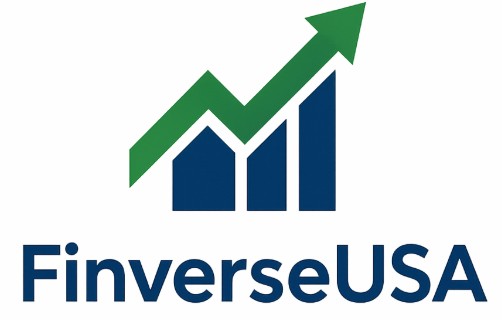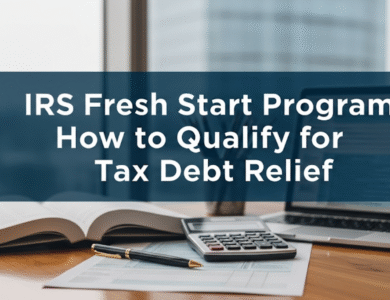
The world of real estate has changed and evolved dramatically from just the last 2-3 years. Smart investors are no longer focused solely on traditional hotbeds, like New York or California. The winning play is to find markets with the right combination of affordability, growth potential and high rental demand today.
Whether you’re a rookie with $50,000 to invest or have millions under management, the market or markets you select can mean the difference between still being an active investor a year from now or giving up on managing your own investments altogether. Investors looking to buy properties on-the-cheap need to find markets with maximum potential for future appreciation, and this guide summarizes the top real estate markets that most investors should consider in the next five years.
It Makes All The Difference: Why Market Selection Is Everything
The selection of a real estate market can be compared to the selection of soil for planting. Even the most brilliant investment strategy will fail when you’re in the wrong place. Smart investors think about markets that give them several ways to win – by benefiting from property appreciation, rental income and tax advantages.
Among the factors that distinguish the winning markets from the losers are job growth, population trends, housing supply and local economic policies. Those with a variety of industries, growing population and a pro-business climate typically outperform those who rely on a single industry or are seeing a decrease in the number of residents.
Top-Tier Markets for Maximum Returns
Tampa, Florida: The Sunshine State Gold Mine
Tampa is one of the hottest real estate markets for investors. The city features no state income tax, a burgeoning tech sector and year-round allure for both residents and tourists.
Investment Highlights:
- Median home price: $425,000
- Average rental yield: 8-12%
- Population growth: 3.2% annually
- Major employers: Publix, Raymond James, Tampa General Hospital
This diverse economy includes healthcare, finance and technology. Downtown revitalization, bringing in major corporations and thousands of young professionals, has generated powerful demand for rent and home purchases. Buy-and-hold investors would do well to consider places such as Westchase and New Tampa.
Austin, Texas: Tech Town With Small-Town Roots
Austin marries Silicon Valley innovation with Texas business-friendly policies. Its “Keep Austin Weird” catchphrase draws creative people, while big tech companies offer economic stability.
Investment Metrics:
- Median home price: $550,000
- Rental yield: 6-9%
- Job growth: 4.1% annually
- Major enterprises: Apple, Google, Tesla, Meta
The challenge in Austin is getting into affordable property, but there are great deals still available if investors target neighborhoods on the upswing, such as Mueller and East Austin. The city will double in size by 2040, so the demand is there long term.
Charlotte, North Carolina: Banking Capital of the South
Charlotte has that winning mix of big-city services and Southern affordability. The city is second only to New York City as a financial center, offering an economic stability that many markets cannot afford.
Key Statistics:
- Median home price: $385,000
- Average rent growth: 12% annually
- Fortune 500 companies: 8
- Population growth: 2.8% yearly
Areas such as NoDa (North Davidson) and South End have evolved from industrial zones to vibrant neighborhoods with some of the highest rents. Light rail connects the city’s largest employment centers, and transit-oriented developments have been attractive to investors.
Hidden Gem Markets with Big Potential
Boise, Idaho: Mountain West Rising Star
Boise has been catching the eye of Californians looking for more affordable living and greater quality of life. The city has outdoor activities, a growing tech sector and perhaps surprisingly strong cultural offerings.
Investment Appeal:
- Median home price: $465,000
- Rental market strength: High
- Tech job growth: 5.3% annually
- Quality of life ranking: Top 10 nationally
What’s scarce in Boise is inventory — demand strips supply bare. But investors who can acquire properties in established neighborhoods such as the North End, or up-and-coming places such as Garden City, tend to do very well.
Nashville, Tennessee: Music City Money Maker
Nashville’s economy has come to be defined by much more than country music. Now the city is home to large healthcare firms, logistics operations and a booming tourism market that has become a fertile ground for short-term rental investments.
Market Strengths:
- No state income tax
- Median home price: $485,000
- Tourism: 15+ million annual visitors
- Healthcare employment: 300,000+ jobs
There are multiple ways to invest in the Music City. Traditional rentals are effective in suburbs such as Franklin and Brentwood; downtown has seen success as short-term vacation rentals for out-of-towners and business travelers.
Phoenix, Arizona: Desert Oasis for Investment
Phoenix offers year-round sun coupled with a broad-based economy and growth that is chugging along steadily. The city’s comparatively low cost of housing versus California has combined with its affordable housing to spur relocation of both residents and employers.
Investment Data:
- Median home price: $445,000
- Population growth: 2.5% annually
- Major industries: Technology, aerospace, healthcare
- Water supply: Manageable with good planning
Savvy investors in Phoenix flock to areas with great school districts and employment opportunities near major employers like Intel or Honeywell. The West Valley, which includes cities like Surprise and Peoria, has particularly strong rental markets.
Emerging Markets to Watch
Columbus, Ohio: Where the Midwest Meets Innovation
Columbus has both Midwest affordability and Big Ten energy. The diversified economy of the city is anchored in education, government, healthcare, and the growing technology sector.
Why Columbus Works:
- Extremely affordable entry point
- Healthy demand from students and professionals
- Top employers: Ohio State University, Nationwide, Cardinal Health
- Stable, diversified economy
Location is everything in Columbus. Those in the vicinity of Ohio State’s campus or the downtown business district tend to get the best returns. The German Village and Short North neighborhoods of the city command high rents.
Raleigh, North Carolina: Research Triangle Powerhouse
Raleigh is the anchor to North Carolina’s Research Triangle, along with Durham and Chapel Hill. A high concentration of universities and tech companies results in steady demand for rental properties.
Market Advantages:
- Three major universities nearby
- Growing tech and biotech sectors
- Reasonable housing costs
- High-quality public services
Investors should look in areas close to Research Triangle Park and major universities. Future appreciation is supported by the city’s growth trajectory and infrastructure spending.
Market Comparison Analysis
| Market | Median Price | Rental Yield | Growth Rate | Risk Level |
|---|---|---|---|---|
| Tampa, FL | $425,000 | 8-12% | High | Medium |
| Austin, TX | $550,000 | 6-9% | Very High | Medium-High |
| Charlotte, NC | $385,000 | 7-10% | High | Low-Medium |
| Boise, ID | $465,000 | 6-8% | High | Medium |
| Nashville, TN | $485,000 | 8-11% | High | Medium |
| Phoenix, AZ | $445,000 | 6-9% | Medium-High | Medium |
| Columbus, OH | $285,000 | 9-12% | Medium | Low |
| Raleigh, NC | $415,000 | 7-10% | High | Low-Medium |
Investment Strategies That Actually Work
The BRRRR Method in Practice
The BRRRR (Buy, Rehab, Rent, Refinance, Repeat) method works great in hot rental markets and in markets with property values that are rising. Tampa and Charlotte provide perfect conditions for this approach.
The trick is figuring out which markets will provide homes that are below value and only need cosmetic improvements, not a complete structural overhaul. With a successful BRRRR deal, you will have pulled out much if not all of your initial investment yet still retained a cash-flowing property.
Short-Term Rental Opportunities
Cities where short-term rentals are popular correlate with Airbnb and VRBO success. In this area, most places aren’t in high demand — Nashville, Austin, and Tampa are exceptions — but demand should be evaluated along with local laws and market saturation.
Do your due diligence when investing in short-term rentals — research local zoning laws, HOA restrictions and any licensing you’ll need. Short-term rentals in residential areas are restricted or prohibited in some cities.
Fix and Flip Considerations
Flipping performs best in markets where there’s strong buyer demand and limited housing supply. Phoenix and Boise are currently good places to flip, but it requires market knowledge and a reliable contractor network.
The key to flipping is acquiring the right property. Look for properties that need cosmetic work rather than major structural rehabilitation, and make sure to calculate holding costs, financing costs and sales commissions.
Avoiding Common Investment Mistakes
Don’t Chase Headlines
Media hype is usually a sign of market tops, not opportunity. By the time a market shows up on national “hot lists,” the best opportunities may have already passed for early movers.
Instead, focus on fundamental indicators like job growth, population trends and housing supply. These measures offer more valuable investment guidance than headline-grabbing price increases.
Location Within the Market Matters
Not every neighborhood in a hot market is a good place to invest. Even in hot markets like Austin or Tampa, there are neighborhoods with poor schools, high crime or limited rental demand.
Research specific neighborhoods thoroughly. Consider crime rates, school ratings, employment centers and upcoming developments. The most profitable investment properties are often in transitional neighborhoods that are just beginning to show signs of improvement.

Don’t Ignore the Numbers
Emotion-based decisions destroy real estate returns. All investments should make sense based on your financial criteria, no matter how much you may love the property or city.
Set clear investment criteria before you begin your search. This could include minimum cash flow requirements, maximum price per square foot, or required rental yield. Stick to your standards, even when markets are competitive.
Tools and Resources for Market Research
Online Research Platforms
For reliable market data, BiggerPockets provides market analysis and investment calculators, while sites like Rentometer can help estimate rental rates.
Local MLS systems have the most accurate pricing data, but you may need to work through a real estate agent to get access. Many agents specialize in investment properties and can offer valuable market insights.
Professional Network Building
Real estate investing success starts with a strong local team. This includes real estate agents, property managers, contractors, accountants, and lawyers who understand investment properties.
Building these relationships takes time, but they pay off in deal flow, market information, and operational efficiencies. Join local real estate investment groups and network to find team members.
Future Market Trends to Consider
Remote Work Impact
The shift to remote work has permanently altered real estate demand. Lower-cost, high quality of life secondary cities continue to attract workers from expensive coastal markets.
This trend especially benefits places like Boise, Nashville and Austin, where workers can maintain big-city salaries while enjoying lower cost of living. Investors should consider how the remote work surge could impact their target markets.
Infrastructure and Development Plans
Major infrastructure projects often signal potential for future appreciation. Research planned highways, mass transit systems, sports stadiums and mixed-use developments in your target markets.
These projects can take years to complete, but typically result in significant property value increases for surrounding investments. Austin’s Airport Boulevard redevelopment and Tampa’s Water Street district are examples of how infrastructure investment enhances real estate returns.
Getting Started: Your Next Steps
Set Your Investment Goals
Define your investment objectives before selecting a market. Do you need immediate cash flow, long-term appreciation, or a combination? Different markets excel at different strategies.
New investors often benefit from starting in cash flow markets like Columbus or Tampa, while experienced investors may pursue higher growth markets like Austin, even if initial yields are lower.
Secure Your Financing
Access to capital is essential for real estate investment. Build relationships with lenders who understand investment properties and can close quickly when opportunities arise.
Consider financing options beyond traditional loans, including private money, partnerships, hard money or portfolio loans. Having pre-approved financing gives you an advantage over the competition.
Start Small and Scale
Most successful investors start with one property in one market. This allows you to learn the business without overextending yourself.
Once you’ve mastered the fundamentals of one market, you can expand to additional properties or markets. This is how many successful investors build large portfolios — by specializing in specific neighborhoods or property types.
Frequently Asked Questions
Q: How much money should I have saved before starting real estate investing? A: You can get started with as little as 3-5% down for owner-occupied properties or 20-25% for investment properties. Many successful investors start with $25,000-$50,000 in capital (down payment, closing costs, and reserves).
Q: Is it better to invest locally or in distant markets? A: Both strategies can work. Investing locally allows hands-on management and better market knowledge, while investing in stronger distant markets may provide higher returns. New investors often benefit from starting locally.
Q: What’s the difference between cash flow and appreciation markets? A: Cash flow markets provide positive rental income over expenses immediately, while appreciation markets focus on property value growth over time. The best markets offer both, though most lean toward one or the other.
Q: How do I evaluate an investment property’s potential? A: Key metrics include cash flow, cap rate, cash-on-cash return and debt service coverage ratio. Also consider location factors, property condition, rental demand and exit strategies.
Q: What are the biggest risks in real estate investing? A: Common risks include vacancy, major repairs, market downturns, interest rate changes, and regulatory changes. Proper due diligence, reserves and insurance help mitigate these risks.
Q: Should I self-manage properties or hire a management company? A: This depends on your available time, skills, property location and investment goals. Property managers typically charge 8-12% of rental income but can save time and professional headaches.
Q: How do taxes affect real estate investment returns? A: Real estate offers several tax advantages including depreciation deductions, mortgage interest deductions and 1031 exchanges. Consult with a tax professional experienced in real estate investing.
Q: What’s the best way to find good investment properties? A: Build relationships with agents specializing in investment properties, use online platforms like BiggerPockets, work with wholesalers, and network within the investor community. Direct marketing to property owners can also uncover opportunities.
Your Real Estate Success Starts Now
The best real estate markets for smart investors offer affordability, growth potential and strong fundamentals. Whether you choose established markets like Tampa or Charlotte, or emerging opportunities like Columbus or Raleigh, success depends on thorough research, analysis and disciplined execution.
Remember, real estate investing is a long-term game. Investors who build and maintain wealth focus on sustainable strategies, not get-rich-quick schemes. Start with solid fundamentals, choose markets with growth catalysts, and build your expertise and network over time.
The markets highlighted in this guide represent some of today’s best opportunities — but markets are always evolving. Stay informed about economic trends, demographics and local market conditions. Most importantly, take action — even the best analysis is worthless without execution.
Your real estate investing journey begins with one property in the right market. Make informed decisions, invest wisely, and build the wealth and freedom that real estate can provide.

